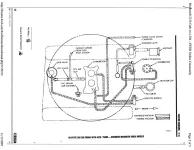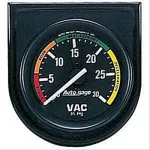School Me please - Tuning procedures
- Posts
- 5,829
- Media
- 186
- Resources
- 1
- Thanks
- 74
- Location
- Plumas Lake, CA, USA
- Vehicle(s)
- 1974 CJ5 ~ Fresh built AMC 360 - SM420 - D20 - D30F with upgraded 30 spline shafts and knuckles & D44R - 4.27 Gears - ARB Lockers F/R - All chrome molly axles - on 33's - YJ 4" Lift Spring Conversion
I have always tuned timing per spec, then turned a bit +/- to get the best response and smoothest running symptoms. Then I reset the carb mixture screws to zero, out to recommended spec (I think 3-1/2 out for my MC2100) then increase / decrease the idle speed and mixtures as needed to smooth out...
And called it good from there. I have been unhappy with my tuning by feel / trial and error though... My power top end is lacking when I really get on her, which I understand can be a non tune-able fix (could and probably is internal engine wear). She runs good for what I use her for mostly, but hoping for some improvements...
I've recently read though that the best method of tuning is to use a vacuum gauge and timing light to accomplish a greatly tuned engine...
Please school me on the procedures, etc. I believe it was 007 that had a setting marked on the distributor for elevation and sea level (or close to) locations, a on-board vacuum gauge, and had things spiced up a bit... This got me thinking about how ignorant I am on this subject... I know some, but for the sake of completeness and to ensure what I know is correct, please start from the beginning...
Links to great articles is fine too
FYI - 304v8 - should be stock (Cam and bore etc)
DUI HEI style distributor
MC2100 1.08 Carb with minimal vac hooked up.
I could even have my vacuum lines way out of whack and hooked up wrong...
I'll try to get a picture or diagram of my hook up to add here to start with too.
Want a clean running beast for Colorado trail ride appearance this year...

And called it good from there. I have been unhappy with my tuning by feel / trial and error though... My power top end is lacking when I really get on her, which I understand can be a non tune-able fix (could and probably is internal engine wear). She runs good for what I use her for mostly, but hoping for some improvements...
I've recently read though that the best method of tuning is to use a vacuum gauge and timing light to accomplish a greatly tuned engine...
Please school me on the procedures, etc. I believe it was 007 that had a setting marked on the distributor for elevation and sea level (or close to) locations, a on-board vacuum gauge, and had things spiced up a bit... This got me thinking about how ignorant I am on this subject... I know some, but for the sake of completeness and to ensure what I know is correct, please start from the beginning...
Links to great articles is fine too
FYI - 304v8 - should be stock (Cam and bore etc)
DUI HEI style distributor
MC2100 1.08 Carb with minimal vac hooked up.
I could even have my vacuum lines way out of whack and hooked up wrong...
I'll try to get a picture or diagram of my hook up to add here to start with too.
Want a clean running beast for Colorado trail ride appearance this year...






